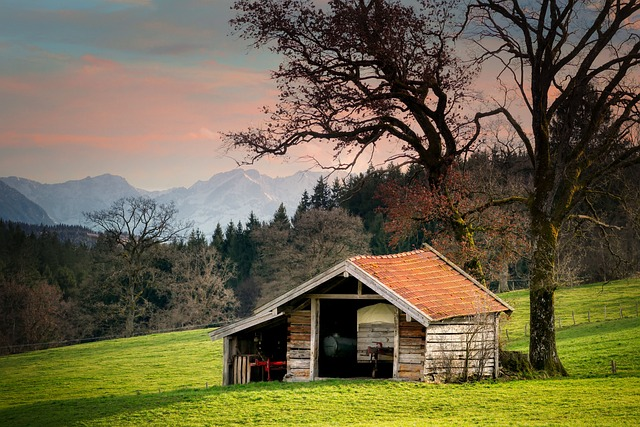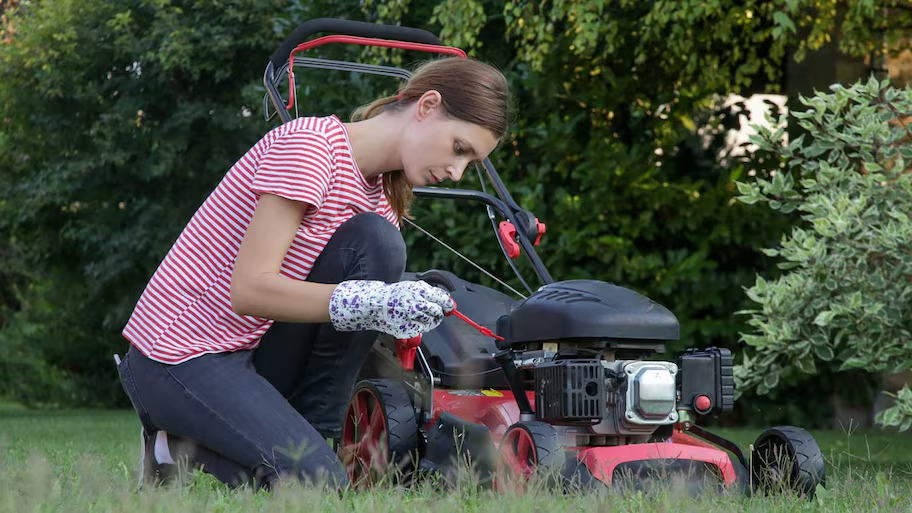Converting an old shed into a tiny house or living space offers a creative and sustainable way to repurpose existing structures and maximize living space. This article will guide you through transforming a humble shed into a functional and stylish tiny home. From assessing the shed’s conversion potential to planning the design, implementing structural upgrades, and incorporating essential elements like electrical and plumbing systems, this comprehensive guide will provide the necessary insights and tips to convert your shed into a cozy and efficient living space. Whether you want to create a guest house, a home office, or a retreat in your backyard, this article will help you navigate the steps involved in this rewarding conversion project.
1. Assessing the Shed for Conversion Potential
1.1 Evaluating Structural Integrity
Transforming an old shed into a cozy tiny house or living space is a rewarding project that demands careful evaluation of the shed’s structural integrity. Garden sheds often serve as mere storage units, but they can be reborn with some creativity and effort as charming, functional living areas. Before diving into renovations, assessing the foundation, walls, and roof for any signs of wear and tear is crucial. Look for cracks, rot, or shifting that could compromise the structure’s stability. Reinforcing the frame and ensuring proper insulation is essential to creating a safe and comfortable environment. By addressing these critical aspects, you can turn a simple garden shed into a delightful tiny home that maximizes space and offers a unique, minimalist lifestyle.
1.2 Considering Zoning and Permit Requirements
Before you start dreaming about your new mini abode, it’s crucial to consider your area’s zoning and permit requirements. Navigating these regulations can be complex, but they are essential for ensuring your project is legal and safe. Shed prices can vary significantly based on size, materials, and features, so it’s important to budget accordingly. For those interested in residential sheds, this can be the perfect opportunity to create a unique, personalized living space that combines functionality with charm. Whether you envision a tranquil retreat in your backyard or a fully functional secondary dwelling, careful planning and adherence to local laws will make your tiny house project a rewarding success.
2. Planning and Designing the Tiny Living Space
2.1 Creating a Layout and Floor Plan
As you embark on this journey, the first step is crafting a thoughtful layout and floor plan that maximizes every square inch of your new shed. Consider the spatial constraints and think vertically—lofted beds, mezzanine storage, and multipurpose furniture can dramatically enhance usability. Integrate natural light through strategically placed windows and skylights, turning the once dark and dusty outdoor shed into a bright, inviting living space. Don’t forget to incorporate essential amenities like a compact kitchen, bathroom, and living area, each designed with efficiency in mind. Every detail matters, from the choice of materials to the color palette, to create a harmonious and functional tiny home that feels much larger than its modest footprint.
2.2 Incorporating Natural Light and Ventilation
Transforming an old shed into a tiny house or living space is not merely a trend but an innovative lifestyle choice that blends simplicity with sustainability. Imagine stepping into a once-forgotten outdoor shed, now bathed in natural light streaming through strategically placed skylights and windows. Each beam of sunlight dances across the room, creating a cozy yet invigorating atmosphere that breathes new life into the space. With thoughtfully designed ventilation, the air remains fresh, circulating seamlessly to ensure comfort regardless of the season. This revitalized shed becomes a sanctuary, where every corner is utilized efficiently, blending the charm of rustic simplicity with modern living conveniences. An outdoor shed conversion in tiny homes is a testament to creative ingenuity and a commitment to living harmoniously with nature.
3. Structural Upgrades and Renovations
3.1 Reinforcing Foundation and Framing
One of the most critical steps in this metamorphosis is reinforcing the foundation and framing, especially when dealing with a flat roof. A solid foundation ensures stability and longevity, allowing your new abode to withstand the elements and daily use. Meanwhile, robust framing supports the structure, giving it the strength to support additional insulation, walls, and roofing materials. By focusing on these essential components, you can turn a simple outdoor shed into a functional, comfortable retreat that maximizes space and minimizes environmental impact. This transformation enhances your backyard’s utility and embodies the essence of innovative tiny living.
3.2 Upgrading Windows and Doors
Transforming an old outdoor shed into a cozy tiny house is an exciting project that can breathe new life into an often-overlooked structure. One of the most impactful upgrades you can make is to replace the existing windows and doors with modern, energy-efficient alternatives. Imagine the warm sunlight streaming through a newly installed window, illuminating the space and making it more open and inviting. Upgrading to high-quality personal access doors enhances the aesthetic appeal and improves security and insulation, making your tiny living space comfortable year-round. Additionally, when you buy blind that complement your new windows, you add a layer of privacy and control over natural light, further enhancing the comfort and style of your tiny home. With these simple yet significant changes, your humble shed can become a charming retreat that perfectly blends functionality with a rustic charm.
4. Maximizing Space Efficiency and Functionality
4.1 Utilizing Multi-functional Furniture
By utilizing multifunctional furniture, you can maximize the utility of every square inch while maintaining an air of spaciousness and comfort. Imagine a sleek sofa that effortlessly converts into a cozy bed or a dining table that seamlessly folds away when unused. The key to making this tiny living space functional and inviting is the choice of quality materials. Opt for durable woods, high-grade metals, and fabrics that can withstand the test of time. Moreover, incorporating built-in storage solutions ensures that every item has its designated place, significantly enhancing the storage capacity of your compact abode. This thoughtful approach transforms the humble shed into a stylish and efficient tiny home, perfect for minimalist living or a tranquil retreat.
4.2 Implementing Smart Storage Solutions
This rising trend in the shed industry has captured the imagination of many, particularly in regions like Gladstone, where homeowners are embracing innovative living spaces. You can create a charming and functional living area that maximizes every square inch by repurposing an underutilised shed. Integrated storage solutions such as built-in shelves, multi-functional furniture, and hidden compartments save space and add a touch of ingenuity to your tiny abode. Whether for an artist’s studio, a guest house, or even a personal retreat, transforming sheds in Gladstone into tiny living spaces offers a unique blend of practicality and style. The key lies in smart design—ensuring that each element serves multiple purposes, thus turning a simple shed into a marvel of modern, minimalist living.
5. Electrical and Plumbing Considerations
5.1 Planning for Electrical Outlets and Lighting
Transforming an outdoor shed into a cozy tiny house is an exciting endeavour combining ingenuity and practicality. One of the most critical aspects of this project is planning for electrical outlets and lighting to ensure your high-quality sheds look inviting and function efficiently. Begin by mapping out your electrical needs; consider where you’ll place essential appliances like a mini-fridge or microwave, and think about positioning outlets to accommodate these devices conveniently. Opt for energy-efficient LED lighting to illuminate your space warmly and effectively, ensuring that both task and ambient lighting are considered. Additionally, if you’re undertaking this project in Texas, taking advantage of electricity choice texas offers can help you select a suitable electricity provider to meet your specific needs. With thoughtful planning, your high-quality shed can be transformed into a charming, functional, tiny living space that feels like home.
5.2 Installing Plumbing Fixtures and Water Supply
One of the most crucial steps in this transformation is installing plumbing fixtures and establishing a reliable water supply. This process begins with thoroughly assessing the existing structure to determine the best spots for sinks, showers, and toilets. Next, carefully plan the layout to ensure efficient use of space and easy access to water lines. By utilizing modern, compact fixtures designed for small spaces, you can maintain the aesthetic appeal of the outdoor sheds while maximizing functionality. Proper insulation around pipes and securing connections will prevent leaks and ensure a steady water flow. This thoughtful approach reinvents your outdoor shed and adds significant value and versatility to your property.
6. Insulation and Climate Control Solutions
6.1 Choosing Insulation Materials
Converting an old shed into a cozy tiny house is an exciting and rewarding endeavour when dealing with gable roof styles. The gable roof, with its iconic triangular shape, not only offers aesthetic appeal but also provides ample space for insulation, ensuring your tiny living space remains comfortable year-round. Whether you opt for spray foam to seal every nook and cranny, rigid foam boards for their high R-value, or eco-friendly wool batting to align with sustainable living, each material has unique advantages. Proper insulation enhances energy efficiency and contributes to soundproofing and moisture control, transforming your old shed into a warm, inviting oasis. So, as you embark on this transformative project, remember that the proper insulation is the key to unlocking the full potential of your tiny home under that charming gable roof.
6.2 Selecting Heating and Cooling Systems
Transforming an old farm sheds or industrial sheds into a cozy tiny house is rewarding, but selecting the right heating and cooling systems is crucial for comfort and efficiency. As you embark on this journey, consider energy-efficient options like mini-split systems, which offer heating and cooling capabilities without wasting valuable space. These systems are perfect for tiny homes due to their compact size and ability to maintain a consistent temperature throughout the year. Additionally, exploring underfloor heating can provide a luxurious touch, ensuring warm floors during chilly mornings. Choosing the appropriate heating and cooling solutions can turn an old shed into a year-round sanctuary that balances functionality and charm.
7. Interior Design and Décor Tips
7.1 Selecting Colors and Finishes
Transforming an old shed into a charming tiny house or cozy spare room is an opportunity to express your creativity and style. Selecting colors and finishes is crucial in this metamorphosis, as they set the tone for your new living space. Opt for light, airy colors like soft whites, gentle grays, or pastel hues to make the small area more open and inviting. Complement these with finishes that add warmth and texture—think reclaimed wood for flooring or rustic beams for the ceiling. The combination of colors and finishes can turn your humble shed into a delightful retreat, perfect for guests or a peaceful personal hideaway.
7.2 Personalizing the Space with Décor Elements
As you embark on this renovation journey, let your décor choices bring the space to life. Start by selecting a soothing color palette that reflects your personality and enhances the natural light. Incorporate multifunctional furniture to maximize every inch while ensuring comfort and style. Adorn the walls with artwork or photographs that tell your story, and don’t shy away from adding greenery to create a fresh, vibrant atmosphere. Lighting plays a crucial role—opt for a mix of pendant lights, fairy lights, and floor lamps to set the perfect mood. Rugs, cushions, and throws can add texture and warmth, making the space feel inviting. By harmoniously integrating these décor elements, you can transform an old shed into a unique, delightful, tiny living space that feels like home.
8. Outdoor and Landscape Integration
8.1 Creating Outdoor Living Spaces
Imagine taking that once-overlooked outdoor structure, often relegated to being a mere storage unit, and breathing new life into it, making it a cozy haven. With some vision and elbow grease, you can turn this underutilized space into a charming retreat, perfect for enjoying the great outdoors without leaving your backyard. Not only does this conversion add a functional living area and additional storage to your property, but it also provides a unique, personal sanctuary that blends the comforts of home with the beauty of nature.
8.2 Enhancing Curb Appeal and Integration with Surroundings
Transforming an old shed into a tiny house or living space is ideal for those looking to enhance curb appeal and seamlessly integrate new, functional outdoor structures with their surroundings. Imagine taking an underutilized, weathered shed and breathing new life into it, creating a charming, efficient living space that not only boosts the aesthetic value of your property but also adds practical, livable square footage. This innovative approach marries sustainability with creativity, repurposing existing structures to craft unique, cozy retreats that reflect personal style and a commitment to eco-friendly living. Converting an old shed can unlock possibilities in your backyard, whether used as a guest house, home office, or private getaway.
In conclusion, converting an old shed into a tiny house or living space is a fulfilling project that allows for creativity, sustainability, and efficient use of space. Following the steps outlined in this article, you can transform a neglected structure into a functional and inviting living area that suits your needs and preferences. Whether you are embarking on this project for practical reasons or as a creative endeavour, converting a shed into a tiny home offers a unique opportunity to make the most out of limited space while adding charm and character to your property. Get started on your shed conversion journey and unlock the potential for a cozy and resourceful living space right in your backyard.
FAQ
1. Is it cost-effective to convert a shed into a tiny house?
With the huge range of affordable materials and DIY resources available today, converting a shed into a livable space is more accessible than ever. This project allows you to repurpose an existing structure and offers a personalized touch to your living space, tailored precisely to your needs. Imagine the charm of a minimalist home, nestled in your backyard, where every corner reflects your unique style and ingenuity. By embracing this innovative approach, you’re saving on the exorbitant costs of traditional housing and contributing to sustainable living. So, why not explore the vast possibilities and discover how a humble shed can be transformed into your dream tiny house?
2. Do I need permits to convert a shed into a living space?
Converting a shed into a living space can be an exciting and rewarding project, but it’s essential to understand the legalities before you dive in. Most jurisdictions require permits for such conversions to ensure that the new living space meets safety and building codes. These permits often cover electrical work, plumbing, insulation, and structural modifications. Failure to obtain the necessary permits can result in fines, forced removal of the modifications, or even complications when selling your property. Consulting with local zoning and building departments is crucial to ensure that your shed conversion enhances your lifestyle and complies with all legal requirements.
3. What are some common challenges when converting a shed into a tiny house?
Insulation is one of the most common issues; sheds are typically designed for storage, not habitation, so they often lack adequate insulation to keep the space comfortable year-round. Another significant challenge is ensuring proper ventilation and airflow to prevent moisture build-up and mould growth, which can harm the structure and the occupants’ health. Structural integrity is also a concern, as sheds may need reinforcement to support additional weight from utilities like plumbing, electrical systems, and heavier furniture. Additionally, zoning laws and building codes can pose hurdles, requiring permits and adherence to regulations that can complicate the project. Despite these obstacles, with careful planning and creativity, transforming a shed into a cozy, functional tiny house is achievable and can offer a rewarding alternative lifestyle.
Autobiography
Jim Pulman has extensive knowledge and experience in Home Building, Construction, and Design. In his free time, he writes articles and partners with content creators to share his expertise with the online community.





